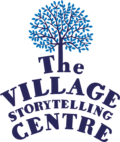Catch up on what we've been doing
Our Summer Newsletter
Check out our latest Newsletter!
Click here
PARTICIPATORY ARTIST RESIDENCY Imagine Lab: Early Years and Families
The Village Storytelling Centre is delighted to present an opportunity for an early career
participatory artist to develop their practice with early years children (0-5) and their adult carers in a
new 16-week residency.
The selected artist will work alongside our experienced practitioner within VSC’s community based
Imagine Lab programme. Funded by Cattanach and Glasgow City Council, Imagine Lab provides early
years children and their adult carers with a range of quality storytelling and arts activities. Facilitated
by an Early Years Storyteller, our workshops explore a range of themes through immersive and
sensory processes.
Application Deadline the 1st of July
For full description and application process go to our opportunity page Here
Emerging Voices in Storytelling Call out!
Following two successful years of this programme, we are delighted to again offer an opportunity for three Emerging Storytellers to take part in a fully paid, 12-week placement.






